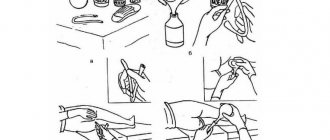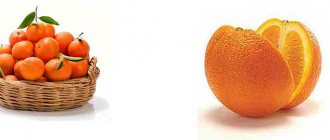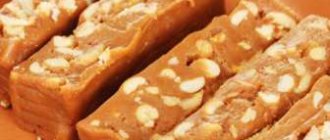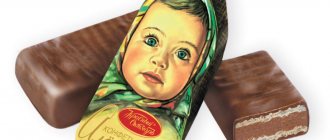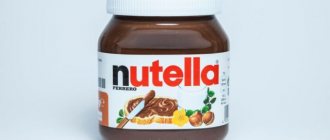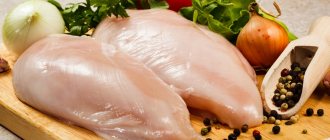What are sweeteners?
People cannot do without carbohydrates because they perform important functions in the body. The main one is to provide energy for the body's vital functions.
Carbohydrates are a broad class of natural organic compounds formed by carbon, oxygen and hydrogen. They are very different in their structure. There are monosaccharides (glucose, fructose, etc.), and there are polysaccharides, consisting of several dozen monomers (starch, cellulose, etc.).
Sugar is prohibited for diabetes
Carbohydrates are classified according to how quickly they raise blood sugar.
- Fast carbohydrates are absorbed quickly, and glucose rises within minutes after food enters the gastrointestinal tract (sugar, syrups, milk chocolate, baked goods, etc.). All of these foods have a high glycemic index (GI).
- The absorption of other carbohydrates (oatmeal, bran, cocoa powder, vegetables, etc.) occurs at a slower rate, since the process of breaking them down into glucose takes a certain time. Such carbohydrates are called slow, they have a low GI.
Despite this, they all ultimately affect glucose levels.
Sugar substitutes have little or no effect on sugar levels.
They are substances of natural or artificial origin that add sweetness to foods. Some of them are close to sugar in this parameter, others are many times superior to it.
The calorie content of substitutes is usually less than the calorie content of sugar. There is a whole group of sweeteners that do not supply calories to the body, since they do not participate in metabolic processes.
The most popular natural substitutes include:
- fructose;
- sorbitol;
- xylitol;
- stevia.
Among the artificial substitutes, the most famous are:
- saccharin;
- aspartame;
- sucralose.
Sweeteners can be simple, i.e. contain one substance, or combined, which include two or more components.
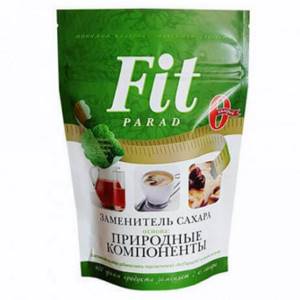
A drug
Compound
The main sweeteners commonly used are:
- sucralose;
- stevia (stevioside);
- erythritol (erythritol).

Sucralose Formula
- Sucralose is 600 times sweeter than sucrose or sugar. It does not undergo changes under the influence of high temperatures. It has a pleasant taste and dissolves well in water. A small amount of sucralose (15%) is absorbed by the body. Discharged within 24 hours.
Does not affect insulin secretion. It does not cross the placental barrier and does not penetrate into mother's milk, therefore, it does not harm the baby during pregnancy and breastfeeding.
These properties have ensured its widespread use in the food industry for the production of diabetic foods. Sucralose has been used quite widely as a sweetener since the early 90s of the last century. Many clinical studies have been conducted. No harmful effects have been found from consuming sucralose.
Recommendation from manufacturers: the optimal amount to consume is 1.1 milligrams per kilogram of weight.

Stevia
- Stevia in its original form is a perennial plant from the Asteraceae family. Grows in North and South America. Local Indians have been using stevia for quite some time to sweeten drinks and dishes. In the 20th century, Europeans paid attention to stevia, and it gained popularity as a sweetener.
Some time ago, the reputation of stevia and the stevioside synthesized from it was questioned regarding safety. Publications have appeared on the mutagenicity of stevia and its derivatives. The expert community is divided in opinion. Some believed that stevia was not only beneficial in the treatment of obesity and hypertension, but also safe, while others insisted that it was harmful. The verdict in 2006 was made by the World Health Organization (WHO) - stevioside, and stevia itself, are not dangerous to humans.
The only drawback of stevia is its specific taste, which not all people like.
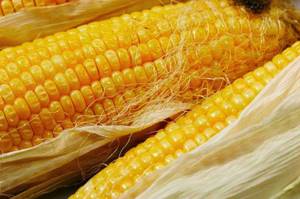
Erythritol is obtained from corn
- Erythritol is a polyhydric alcohol found in pears, melons, corn, soybeans, etc. The taste resembles regular sugar, but is inferior to it in sweetness. The caloric content of erythritol is equal to zero. GI is also zero. The insulin index is very low.
It is not recommended to consume more than 30 grams at a time. In large doses it can provide a laxative effect.
Conducted studies confirm its safety for women during lactation and small children.
Composition of Fit Parad sweetener (fit parade)
Fit Parade has several types of products that differ in composition. Consider the classic composition No. 7.
Description of main components
- Erythritol
- Sucralose
- Stevia
I already wrote about erythritol in this article. This is a conditionally synthetic sweetener. Made from straw or corn. Thermally stable. It improves the taste of other sweeteners, which is why it is added to most mixtures. If the daily dose is exceeded, it may cause a laxative effect. Harmless, calorie-free and does not contain carbohydrates.
Sucralose is a synthetic sugar substitute. Heat stable and harmless. Produced by the chemical transformation of a sugar molecule. Like erythritol, it enters into synergy with other sweeteners and enhances their “sweet properties”.
Stevia is already well known to everyone, thanks to an active advertising campaign. My attitude towards it is described in this article. Added to Fit Parad for high product sales. It is to enhance the sweetness of stevia that the previous two sweeteners are included in the composition. Erythritol also removes its bitterness. Most likely, there is very little stevia in the fit parade, since it is at the end of the composition.
Sweetener "Fit Parade": harm or benefit?
The drug is not included in the Russian Medicines Register (RLS).
Research on this substitute has not been carried out, so it is difficult to reasonably state its negative or positive effects on the body. Its individual components have been studied and found to be safe. Whether there is a negative effect when combining several sweeteners is unknown.
Contraindications
The instructions for use attached to the substitute do not contain a list of specific contraindications.
But taking into account the components that are at its core or have an auxiliary nature, certain conclusions can be drawn on this matter.
- Before using the drug, you must carefully study the list of substances that make it up. If you are hypersensitive to at least one of them, in order to avoid allergic reactions, you should discard this brand and replace the sweetener with an analogue that does not contain a dangerous component.
- Some brands contain lactose (milk sugar). They should not be taken by people who have lactose intolerance or hypolactasia. It occurs when a person does not have enough lactase, the enzyme needed to digest lactose. You can guess about this pathological condition if bloating, pain, and diarrhea begin after eating dairy products.
People with glucose-galactose malabsorption should avoid these brands of sweetener. Lactose consists of glucose and galactose molecules. In this disease, the intestinal cells are unable to metabolize these two monosaccharides.
- Consumption in excess of the recommended dosage may lead to gastrointestinal upset.
- Women during pregnancy or breastfeeding who have type 2 diabetes, gestational diabetes or excess weight problems can resort to taking a sweetener if the doctor does not object to this.
- It should be used with caution by people with severe kidney and liver diseases.
Indications
Recommended for patients with non-insulin-dependent diabetes and obesity.
From advertising materials dedicated to the drug, you can glean information about the advantages of this sweetener.
- It is emphasized that the product was produced using innovative technologies.
- Its excellent taste characteristics are noted.
- The substitute is reported to be heat-resistant, so it can be used for baking a variety of confectionery products.
- Another plus is low calorie content.
- The GI is also low.
- It is claimed that it helps a person quit the habit of consuming sugar.
- It is noted that the drug is available in a wide variety of brands, therefore, the consumer has a choice.
- Indicates availability of prices.
Prices
Prices for the drug vary depending on the brand of the product, as well as its quantity contained in the package. The instructions for “Fit Parade No. 7” indicate that 1 gram of product replaces 5 grams of sugar in terms of sweetness. A simple calculation convinces us that the substitute is an order of magnitude more expensive than sugar. It is difficult to say whether such a price difference is compensated by the advertised advantages over sugar.
When choosing a sweetener, you should not be guided by advertising. If you have diabetes associated with excess weight, you should consult your doctor. Only a choice taking into account all factors (the severity of the disease, the amount of extra pounds, concomitant diseases, etc.) will bring maximum benefit and avoid undesirable consequences.
You can learn about the first signs of diabetes from the video.
Additional information about the drug can be obtained from the video.
Interesting:
- Composition of stevia, clinical effectiveness in diabetes mellitus, potential harm, benefits, effect on glycemia, side effects and contraindications
- Features of adherence to and preparation of a diet for diabetes mellitus
- What do people with this disease need to know about consuming carbohydrates for diabetes?
- What do people suffering from this disease need to know about consuming fructose for diabetes?
- Sugar level 8.8 after eating: what does this concentration of glucose in the blood indicate?
- The mechanism of action of the sugar substitute "Novasvit", indications, contraindications, side effects, methods of use and average cost
- The benefits and harms of sweeteners for diabetes or what you need to know about sweeteners?
Fitness parade 7, 1 and 10: which is better
When selecting a sweetener, some endocrinologists recommend that their patients pay attention to the sugar substitute Fitparad 7. The manufacturer positions it as an absolutely natural product consisting of natural ingredients. This is a modern substitute with excellent taste. According to the manufacturer, it does not cause side effects.
Release options
The manufacturer of the sugar substitute makes it in several variations. You can find several variations of FitParad on sale under different numbers. The substitute “Svita” (based on stevioside) and “Erythritol” are also produced under this name.
The composition of the sugar substitute depends on the form of release.
FitParad No. 1 consists of the following components:
- sucralose;
- erythritol;
- tominambur extract;
- stevioside.
On sale, this sweetener can be found packaged in doy-packs of 400 g, cardboard boxes of 200 g.
Mixture No. 7 consists of:
- sucralose;
- stevioside;
- erythritol;
- rosehip extract.
It is packaged in doypacks of 400 g, sachets of 60 pcs. in packaging, boxes with a capacity of 200 g and cans of 180 g.
The most extensive list of components is in Fit Parade No. 9. It consists of:
- stevioside;
- tartaric acid;
- L-leucine;
- croscarmellose;
- lactose;
- silicon dioxide;
- Jerusalem artichoke extract;
- baking soda;
- sucralose.
It is produced in the form of tablets, they are packaged in 150 pieces.
The composition of the mixture under No. 10 does not differ from No. 1.
It is packaged in doypacks of 400 g, sachets (pack of 60 pieces) and jars of 180 g.
Fit Parade No. 11 is made from:
- sucralose;
- inulin;
- bromelain 300 IU (pineapple extract);
- stevioside;
- papain 300 IU (concentrate from the fruits of the melon tree).
This version of the sweetener has one form of packaging - doy-packs of 220 g.
FitParad No. 14 is based on:
On sale it is found in sachets of 60 pcs. and doypacks 200 g.
FitParad "Erythritol" consists only of the substance erythritol. Packaged in cardboard boxes of 200 g.
FitParad "Svita" is made from stevioside. It is available in 90 g cans.
Features of the composition
Sweeteners contain different components. But before choosing which Fit Parade 1 or 7 is better, it is advisable to understand the substances on which these substitutes are made.
Options No. 1 and No. 7 contain sucralose (E955). This substance is a derivative of sugar. The hydrogen atoms in the sugar molecule are replaced by chlorine. Thanks to this, the sweetness of sucralose becomes more pronounced (it is 600 times sweeter than regular refined sugar). When consumed, the glucose level does not change, because it is not absorbed in the body and is excreted by the kidneys in an unchanged form.
Sucralose is approved in most countries, and no harm has been identified from its use. It is often added as a sweetener to foods with a long shelf life.
Erythritol (E698), also called erythritol. Along with sorbitol and xylitol, it is classified as a sugar alcohol. This is a natural substance found in numerous products - soy sauce, legumes, and some fruits. In industry, it is obtained from various starchy plants, for example, corn.
The calorie content of erythritol is quite high - 14 times higher compared to refined sand. This substance is not as sweet as sugar. But erythritol is allowed for diabetics: it is not absorbed in the body and does not affect glucose levels.
One of the components of Fit Parade is stevioside (E960). This substance is a natural extract of stevia. It is allowed almost everywhere, and its safety has been proven in tests. But in some states it is sold as a dietary supplement. Stevioside is considered a safe and natural sweetener that is 300 times sweeter than sugar.
When consuming stevia extract, glucose levels do not change, so diabetics can safely consume it.
Many people who control carbohydrate metabolism are interested in the differences between Fit Parada 10 and 7. You should pay attention to the composition. The manufacturer additionally added Jerusalem artichoke extract to sweetener No. 10.
This is a natural substance that has a positive effect on the body. It contains inulin, which strengthens the body's defenses and has a beneficial effect on the liver.
Fit Parada No. 7 contains rosehip extract. The berries of the plant are rich in ascorbic acid and vitamin P. In this combination, vitamin C is best absorbed by the body. When consumed, the body's resistance is stimulated, and the process of tissue regeneration is more active.
This composition of the sugar substitute Fitparad 7 makes it popular among many diabetics. Its use allows you to control the concentration of glucose in the blood and not give up your usual sweets. The inclusion of plant extracts stimulates the immune system, which is extremely important for people suffering from carbohydrate metabolism disorders.
Established restrictions
Despite the manufacturer's assurances about the naturalness of sweeteners, they contain industrially approved sweeteners and natural plant extracts.
For diabetics, such sugar substitutes are necessary, because due to poor absorption of glucose, they often crave sweets. And when using manufactured sweeteners, the sugar level in the body does not change in any way.
An overdose of sweetener causes a laxative effect. No more than 45 g of Fit Parada is allowed per day. You should stop using it:
- pregnant women due to potential effects on the fetus;
- nursing mothers;
- elderly people with kidney and liver diseases;
- allergy sufferers (with established intolerance to components).
Before planning to purchase a refined sugar substitute, it is better to consult an endocrinologist. He will help you understand the variety of sweeteners and tell you what to look for when choosing.

